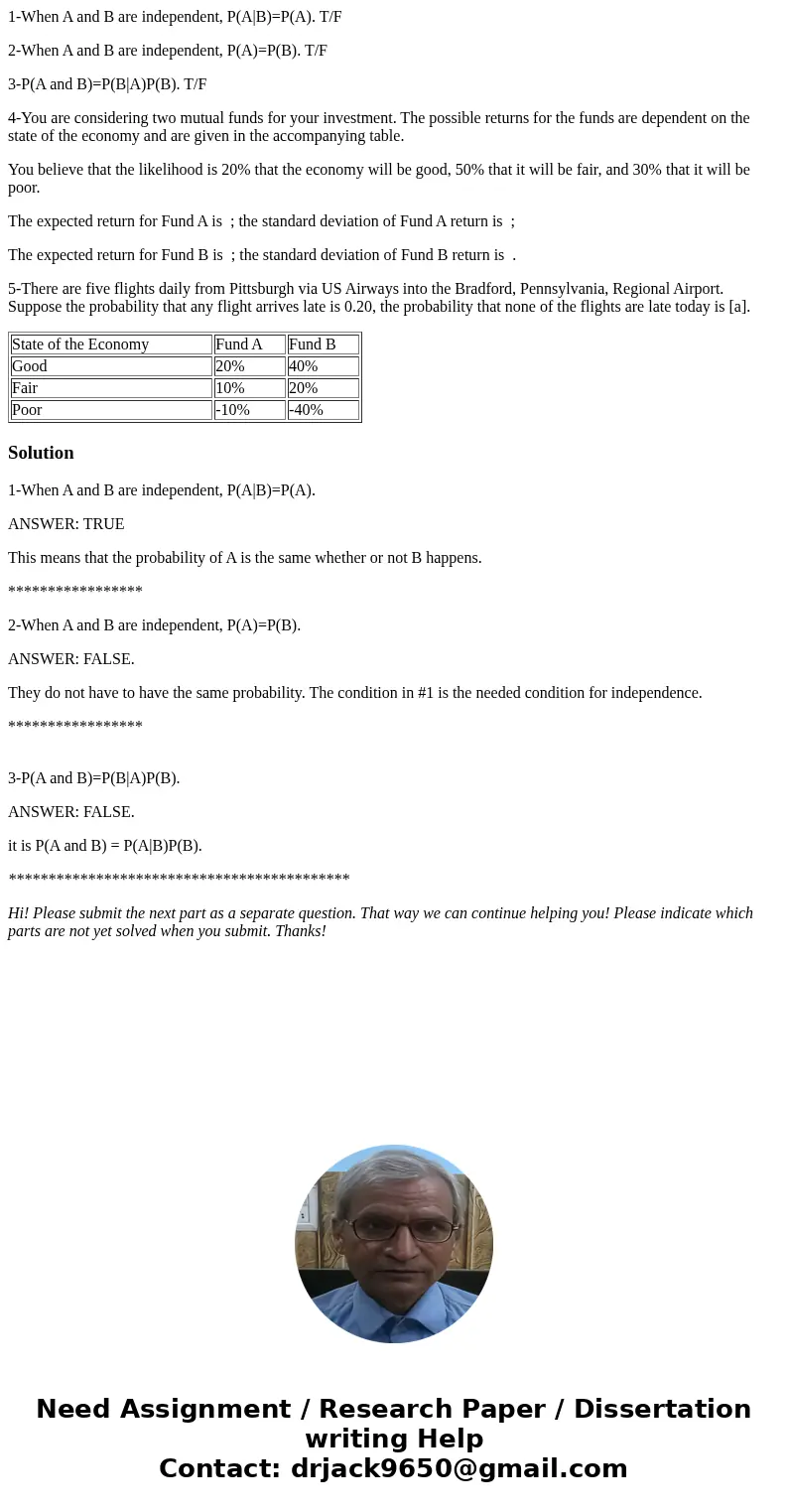1When A and B are independent PABPA TF 2When A and B are ind
1-When A and B are independent, P(A|B)=P(A). T/F
2-When A and B are independent, P(A)=P(B). T/F
3-P(A and B)=P(B|A)P(B). T/F
4-You are considering two mutual funds for your investment. The possible returns for the funds are dependent on the state of the economy and are given in the accompanying table.
You believe that the likelihood is 20% that the economy will be good, 50% that it will be fair, and 30% that it will be poor.
The expected return for Fund A is ; the standard deviation of Fund A return is ;
The expected return for Fund B is ; the standard deviation of Fund B return is .
5-There are five flights daily from Pittsburgh via US Airways into the Bradford, Pennsylvania, Regional Airport. Suppose the probability that any flight arrives late is 0.20, the probability that none of the flights are late today is [a].
| State of the Economy | Fund A | Fund B |
| Good | 20% | 40% |
| Fair | 10% | 20% |
| Poor | -10% | -40% |
Solution
1-When A and B are independent, P(A|B)=P(A).
ANSWER: TRUE
This means that the probability of A is the same whether or not B happens.
*****************
2-When A and B are independent, P(A)=P(B).
ANSWER: FALSE.
They do not have to have the same probability. The condition in #1 is the needed condition for independence.
*****************
3-P(A and B)=P(B|A)P(B).
ANSWER: FALSE.
it is P(A and B) = P(A|B)P(B).
*******************************************
Hi! Please submit the next part as a separate question. That way we can continue helping you! Please indicate which parts are not yet solved when you submit. Thanks!

 Homework Sourse
Homework Sourse